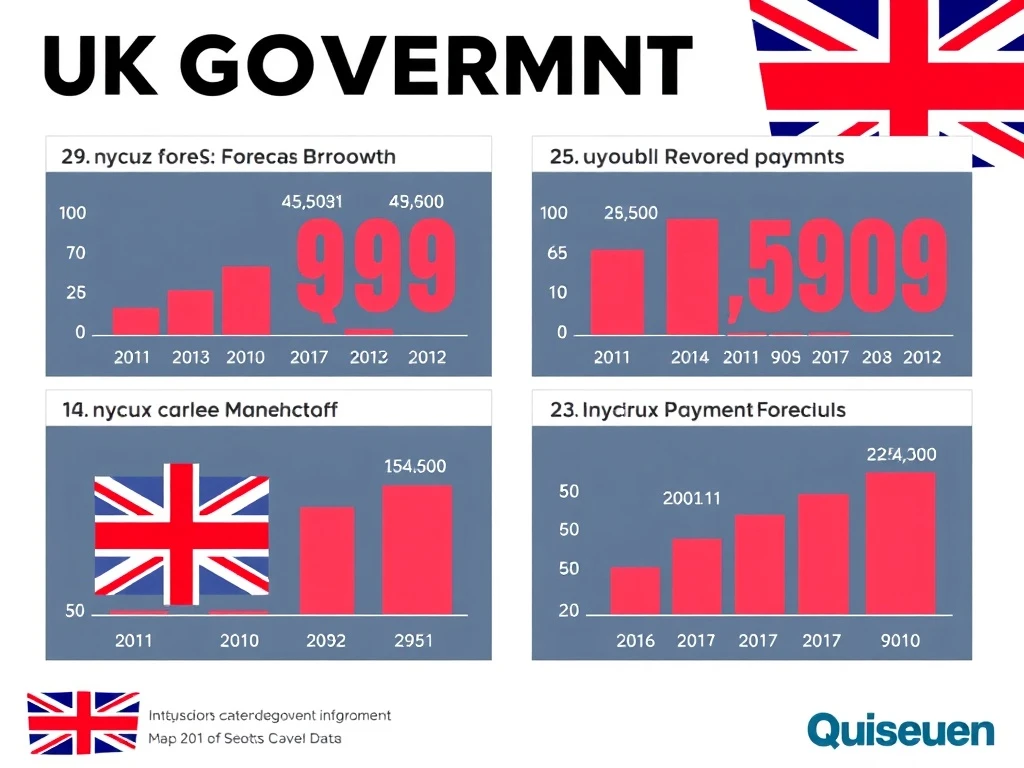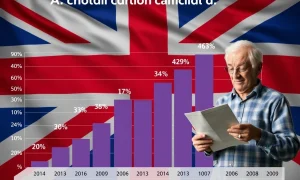In a remarkable fiscal development, UK government borrowing dramatically undershot expectations in July 2025, providing Chancellor Rachel Reeves with unexpected breathing room ahead of her autumn budget decisions. The substantial improvement in public finances stems primarily from robust tax collection performance.
UK Government Borrowing Exceeds Expectations
Public sector net borrowing reached only £1.1 billion last month, significantly outperforming projections. This figure represents less than half the £2.6 billion economists predicted and falls comfortably below the Office for Budget Responsibility’s £2.1 billion estimate. The better-than-expected performance resulted from two key factors:
- Stronger self-assessment receipts driving revenue growth
- Lower debt costs reducing expenditure pressures
- Overall tax revenue increase of £6.1 billion
Tax Revenue Strengthens UK Government Position
July typically serves as a critical month for income tax collections, and 2025 proved exceptionally strong. Self-assessment payments climbed to £15.5 billion, representing a £2.7 billion year-on-year increase. Simultaneously, debt interest payments stood at £7 billion, £1.5 billion lower than OBR estimates. These developments contributed to total tax receipts rising to £77.6 billion.
Spending Pressures Challenge UK Government Budget
Despite positive revenue trends, public spending reached £92.1 billion, up £5.3 billion from the previous year. Key expenditure drivers include:
- State pension increases tracking inflation
- Departmental operational cost growth
- Ongoing public service funding requirements
Fiscal Year UK Government Borrowing Trends
Year-to-date borrowing has reached £60 billion, aligning closely with the OBR’s £59.9 billion forecast. However, the underlying budget deficit—a crucial fiscal rule metric—currently runs £5.7 billion above projections. This discrepancy intensifies the challenge for Chancellor Reeves as she balances revenue against spending commitments.
Expert Perspectives on UK Government Finances
Economists remain divided on the fiscal gap’s ultimate size. Capital Economics suggests the Chancellor may need to address a £27 billion shortfall following welfare policy reversals. Conversely, the National Institute for Economic and Social Research estimates a £40 billion gap. The OBR’s updated autumn budget projections will prove critical for clarifying the situation.
Market Implications of UK Government Borrowing
Financial markets currently expect the Bank of England to maintain interest rates at 4% through year-end. This stability could push annual debt servicing costs above their current £100 billion level. Martin Beck, chief economist at WPI Strategy, notes: “A deficit of 4% of GDP doesn’t represent a fiscal crisis, but it remains uncomfortably high for an economy near full employment.”
Government Response to UK Borrowing Data
Darren Jones, Chief Secretary to the Treasury, emphasized the government’s commitment to reducing borrowing: “Excessive taxpayer money funds longstanding national debt interest payments. We’re determined to lower borrowing throughout this parliament to protect working people from bearing the burden.”
Frequently Asked Questions
How much did UK government borrowing total in July 2025?
Public sector net borrowing reached £1.1 billion, significantly below the £2.6 billion economists forecast.
What caused the better-than-expected borrowing figures?
Strong self-assessment tax receipts and lower debt interest payments primarily drove the improvement.
How does July’s performance affect the full-year fiscal outlook?
While July showed improvement, the underlying budget deficit remains £5.7 billion above projections year-to-date.
What are the main spending pressures facing the government?
State pension increases, departmental costs, and inflation-related expenditures continue growing.
When will updated official forecasts be available?
The Office for Budget Responsibility will release revised projections during the autumn budget statement.
How do interest rates affect government borrowing costs?
Higher rates increase debt servicing expenses, currently around £100 billion annually, impacting overall borrowing requirements.


















